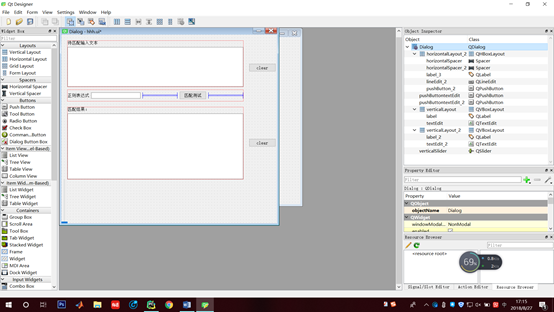Example
Qt/C - Lesson 024. Signals and Slot in Qt5. Signals and slots are used for communication between objects. The signals and slots mechanism is a central feature of Qt and probably the part that differs most from the features provided. The argv coming from the signal is an array of pointers to the arguments. The problem is that these pointers point to the stack of the signal where the arguments are. Once the signal returns, they will not be valid anymore. So we'll have to copy the parameter values of the function on the heap. In order to do that, we just ask QMetaType. So you will link/connect a objects that sends a signal to a slot that receives the signal. Here is a basic GUI for a QT application that will have a button that says 'QUIT' and also a signal that is emitted once that button class clicked has happened, that links to the application (QApplication object) that has a 'quit' function that stops the program from executing. It would be possible to have the slots to which the resized and moved signals are connected check the new position or size of the circle and respond accordingly, but it's more convenient and requires less knowledge of circles by the slot functions if the signal that is sent can include that information. Qt/C - Tutorial 073. Signals and slots. Connecting Slots to Overloaded Signals in the Qt5 Syntax. Quite a frequent problem when working with signals with slots in Qt5, according to my observations on the forum, is the connection of slots in the syntax on the pointers to signals having an over.
Some times you see a signal is emitted in sender thread but connected slot doesn't called (in other words it doesn't receive signal), you have asked about it and finaly got that the connection type Qt::DirectConnection would fix it, so the problem found and everything is ok.
But generaly this is bad idea to use Qt:DirectConnection until you really know what is this and there is no other way. Lets explain it more, Each thread created by Qt (including main thread and new threads created by QThread) have Event loop, the event loop is responsible for receiving signals and call aproporiate slots in its thread. Generaly executing a blocking operation inside an slot is bad practice, because it blocks the event loop of that threads so no other slots would be called.
If you block an event loop (by making very time consuming or blocking operation) you will not receive events on that thread until the event loop will be unblocked. If the blocking operation, blocks the event loop forever (such as busy while), the slots could never be called.
In this situation you may set the connection type in connect to Qt::DirectConnection, now the slots will be called even the event loop is blocked. so how this could make broke everything? In Qt::DirectConnection Slots will be called in emiter threads, and not receiver threads and it can broke data synchronizations and ran into other problems. So never use Qt::DirectConnection unless you know what are you doing. If your problem will be solved by using Qt::DirectConnection, you have to carefull and look at your code and finding out why your event loop is blocked. Its not a good idea to block the event loop and its not recomended in Qt.
Here is small example which shows the problem, as you can see the nonBlockingSlot would be called even the blockingSlot blocked event loop with while(1) which indicates bad coding
Today we will learn about a variation of the Observer design patternthat is used prominently within Qt, called signals and slots.
- Observer and Publish/Subscribe Pattern
- Observers as callback functions
- Observers using signals
- Qt signals
- Examples
- Exercise
GitHub Invitation URL:exercise13
Steps:
Qt Signal Slot Ordered

- Clone the assignment for today after accepting the GitHubinvitation at the link above. The repository contains four files:
Qt Signal Slot Orders
- traffic_light.h defines a Qt widget that uses three radio buttons tosimulate a traffic light.
- traffic_light.cpp is the implementation of the traffic light
- main.ccp sets up the application and starts the event loop
- CMakeLists.txt is the build configuration for the example
- Add code to the TrafficLight class to add a slot called
toggletochange the light currently lit. The sequence should gored->green->yellow->red repeating after that. You will need to addsome internal members to the TrafficLight class to accomplish this. - Read the documentation forQTimer and, in the mainfunction of
main.cpp, add code to setup and start a timer thatgoes off every one second, resulting in the traffic light beingtoggled. This will require connecting a signal from the timer to theslot implemented in step 2. - Build and run your application. Does the light change in the correctsequence?
- Now, use git to commit the source files changed to the localrepository.
- Use git push to synchronize the repository with that onGitHub.
- Finally, post the screenshot of output of your program to Canvas.
Qt Signal Slot Ordering
You have completed the Exercise.
